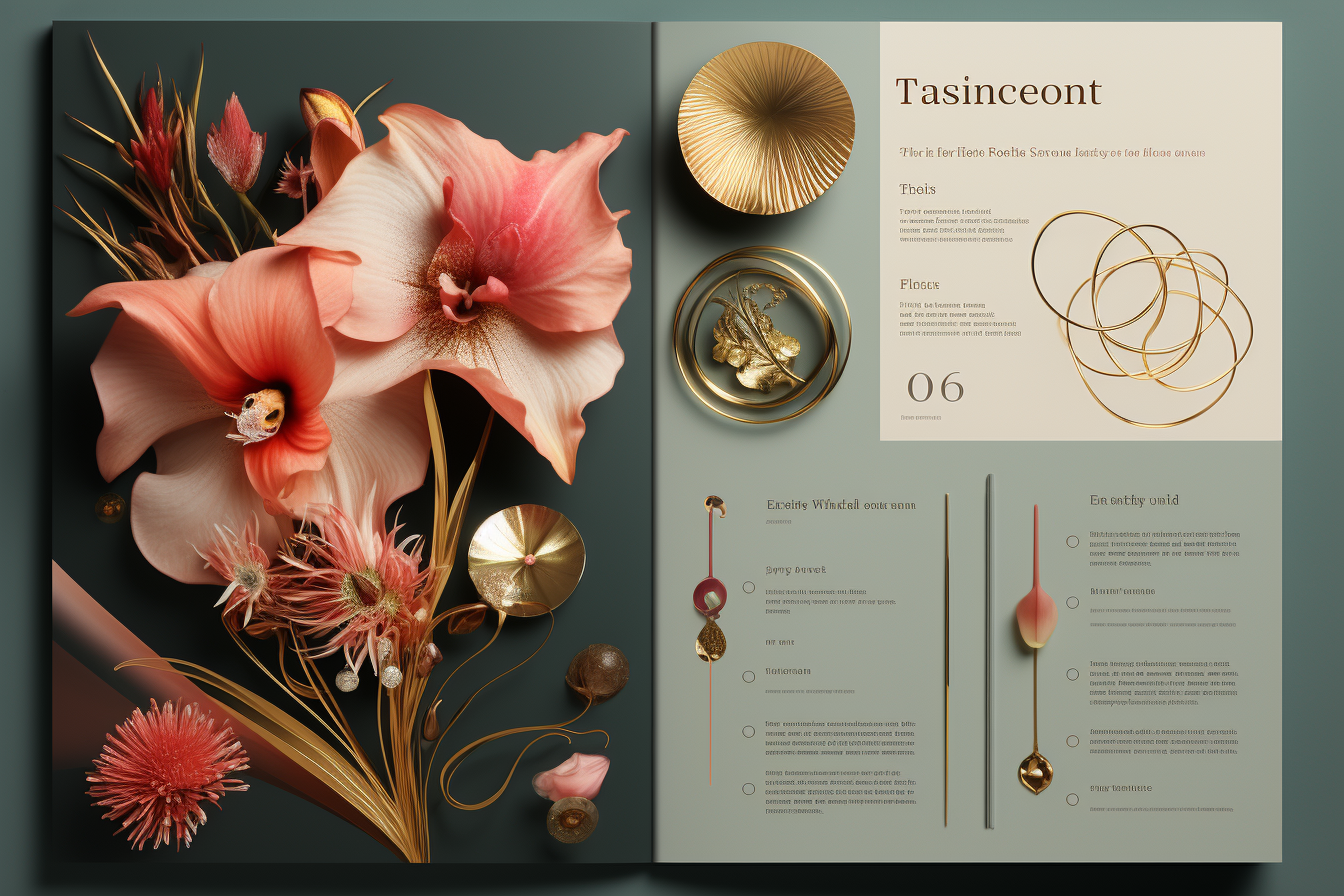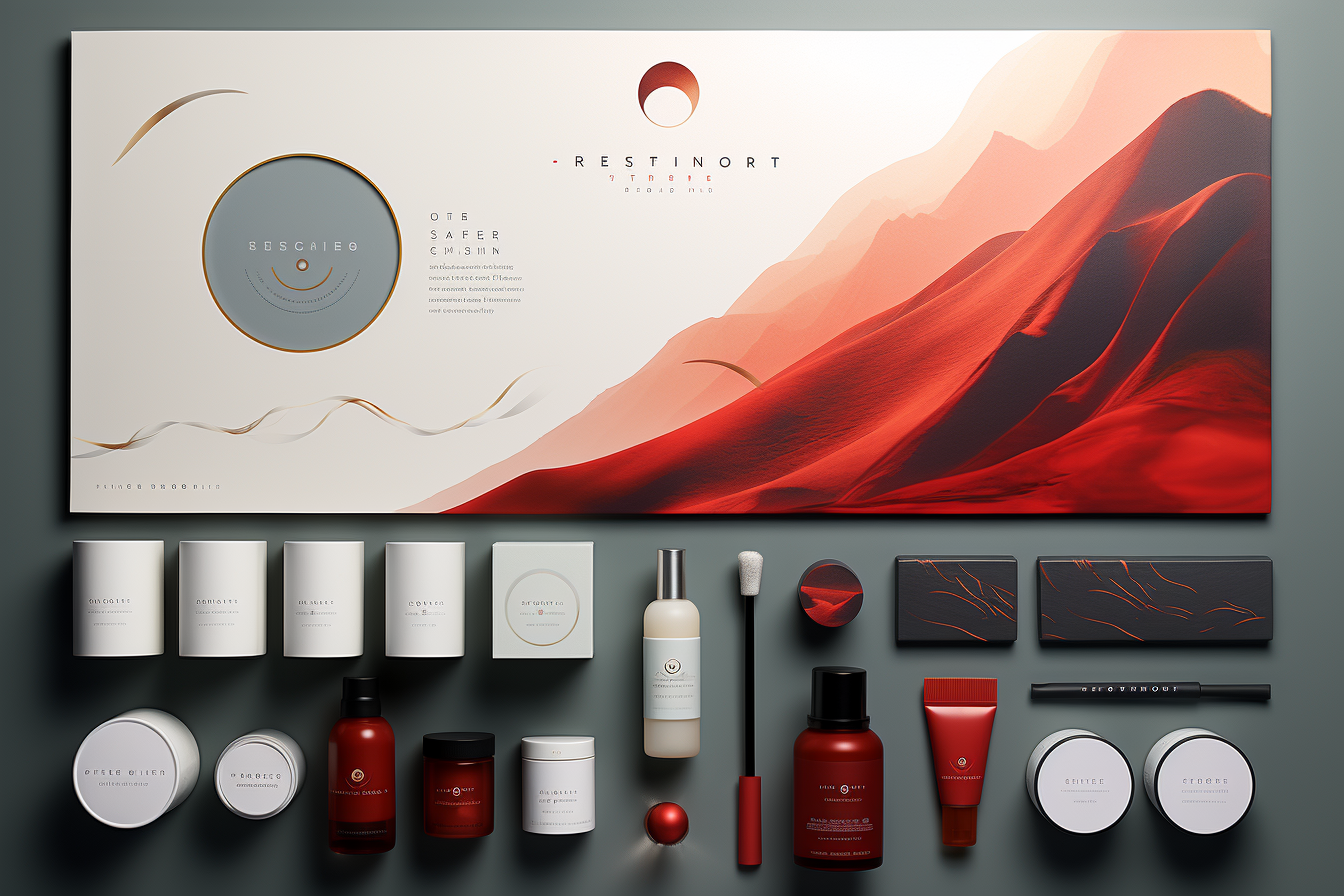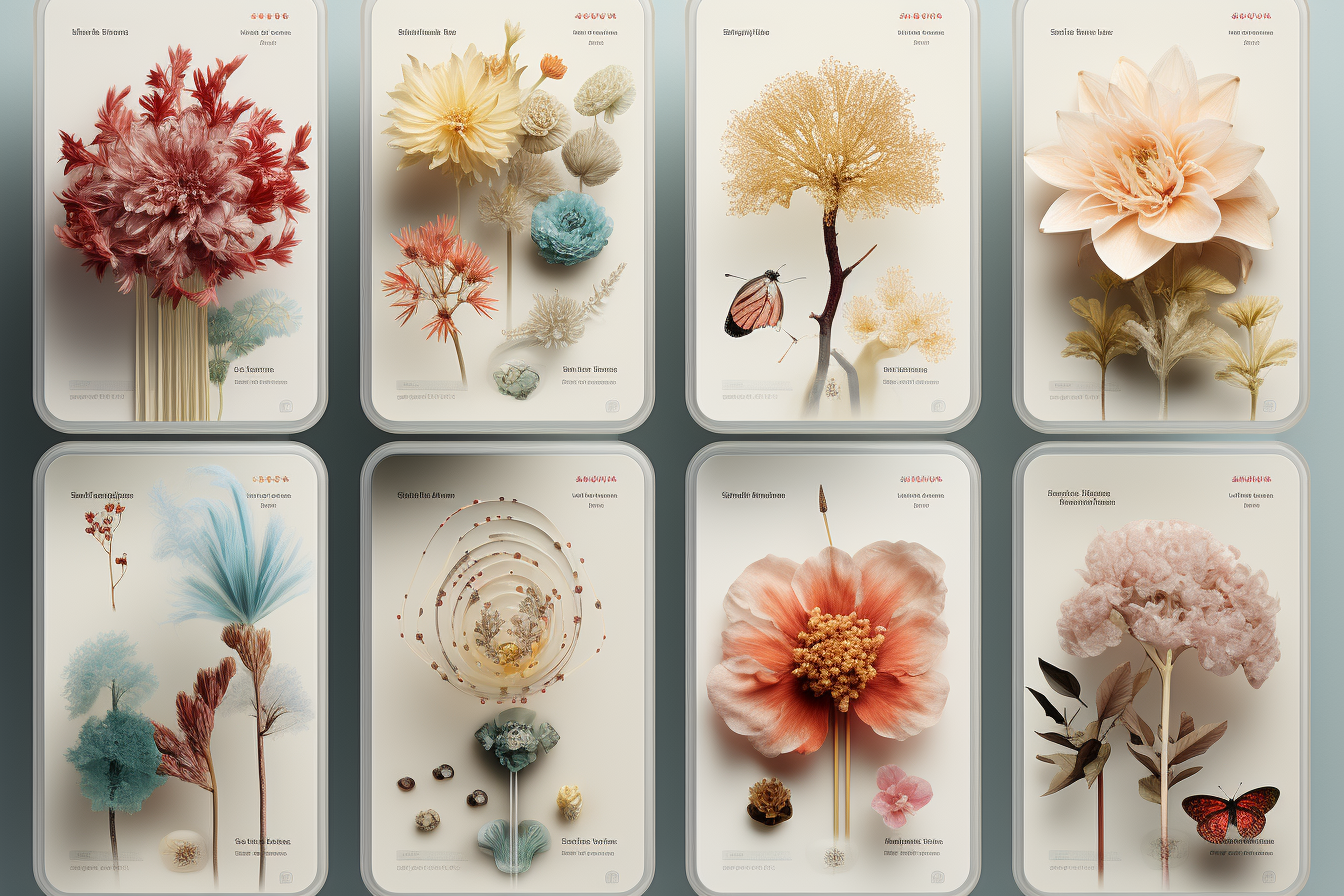What exactly is Aesthetics in Branding?
Whether you manage a small or large business, branding is an important component to consider. It is the process of developing a distinct identity that distinguishes your company from the competition. Aesthetics is an important aspect of branding. In branding, aesthetics refers to the visual design, color schemes, fonts, and other creative components that companies utilize to establish a distinct appearance and feel.

Aesthetics influence how people perceive your brand. It is the first thing that potential customers notice when they contact your company. A well-designed aesthetic can aid in communicating your brand’s values, mission, and purpose. It may elicit emotions, provide a memorable experience, and help you connect with your audience.
Aesthetics may be an effective tool in establishing a consistent brand image. A consistent style can assist clients in recognizing your brand across several channels, such as social media, your website, packaging, and advertising. It can help to develop trust and loyalty, which can lead to increased sales.
When creating a brand aesthetic, there are numerous elements to consider. Color theory, typography, imagery, and composition are some of the fundamental factors. These aspects should be combined to form a unified and effective visual identity.
Color Theory is an essential component of brand aesthetics. Different hues can elicit various emotions and associations. Blue, for example, is frequently connected with trust and professionalism, whilst yellow is frequently associated with happiness and optimism. The appropriate color palette can assist you in communicating your brand message and connecting with your target audience.
Typography is another important aspect of brand aesthetics. The typeface you choose can tell a lot about the spirit of your brand, from whimsical to serious, modern to traditional. The perfect font may make your brand stand out and leave an impact.

Imagery is also an important component of brand aesthetics. The photos you select should reflect your brand’s values and convey your message. They must be of good quality and consistent across platforms.
Composition is the process by which all of these aspects come together to form a unified visual identity. The appropriate composition can make your brand appear polished and professional. Aesthetics are an important aspect of branding. A strong aesthetic can assist your brand in standing out, communicating your message, and connecting with your audience. In the following section, we’ll look at how aesthetics might influence brand perception.
Aesthetic Influence on Brand Perception
People’s perceptions of your brand are heavily influenced by aesthetics. When potential buyers come into contact with your brand, the visual elements establish an immediate impression. This perception may affect their decision to continue engaging with your brand or move on to a competitor.

Aesthetics can help your brand gain trust and credibility. A well-designed aesthetic can give your brand a professional and polished appearance. It can convey that your company is serious about its ideals and dedicated to offering high-quality products or services. This sense of professionalism can help potential consumers trust you.
A poorly conceived aesthetic, on the other hand, can have the opposite impact. If your graphic aspects are inconsistent or unpleasant, it can convey that your brand is amateurish or unworthy of being taken seriously. This notion can affect your brand’s reputation and make establishing trust with potential customers difficult.
Customers’ emotional connection to your brand can also be influenced by aesthetics. Colors, fonts, and images can all elicit diverse emotions and connections. A brand that employs warm colors like red or orange, for example, can evoke feelings of excitement or urgency, whereas a company that uses cool colors like blue or green can evoke feelings of calmness or trust.
You may design a brand aesthetic that resonates with your target audience by knowing the emotional correlations of different aesthetic aspects. This emotional connection can aid in the development of brand loyalty and the retention of customers.

Brand recognition is another way that aesthetics influence brand perception. A consistent style can assist customers in recognizing your brand across several platforms, such as social media, packaging, and advertising. This awareness can help your company stand out in a congested marketplace and provide customers with a memorable experience.
An inconsistent look, on the other hand, can make it harder for customers to distinguish your brand. Inconsistency can cause uncertainty and make it difficult for your brand to build a distinct personality.
Appearances have a big influence on how buyers view your brand. A well-designed aesthetic may increase trust, foster emotional connections, and boost brand recognition. The role of aesthetics in brand distinctiveness will be discussed in the following section.
Brand Differentiation Through Aesthetics
It can be difficult for firms to stand out in today’s cluttered industry. Aesthetics may play an important role in making your brand stand out from the crowd.
A distinct and well-designed aesthetic may distinguish your brand and make it more memorable. You can make your business more identifiable and leave a lasting impression on potential clients by developing a distinct visual identity.

Using surprising color schemes or typography is one approach to differentiate your brand visually. You can establish a distinct look for your company by using a color palette or font that is not typically used in your sector. This unexpectedness can pique the interest of potential customers and increase their likelihood of remembering your brand.
Using bespoke artwork or illustrations is another method to distinguish your brand. You can ensure that your brand is aesthetically distinct and consistent across all platforms by developing your own imagery. Custom images can also allow your brand’s values and message to be communicated more effectively than generic stock photos.
Aesthetics can also help your brand stand out by developing a strong brand personality. You can build a visual identity that corresponds with your company values and communicates a certain brand personality by employing specific colors, fonts, and artwork. This personality can assist your brand in standing out in a crowded marketplace and creating a stronger emotional connection with potential customers.
When it comes to identifying your brand through looks, consistency is essential. To develop a unified and effective visual identity, all of your visual aspects should work together. You can develop a more memorable and distinct brand by ensuring that your aesthetic is consistent across all platforms.
Aesthetics can help your brand stand out from the crowd by building a distinct and memorable visual identity. You can make your brand more recognized and leave a lasting impression on potential buyers by using unusual color schemes, bespoke images, and a strong brand personality. The relevance of changing your aesthetic to diverse media and audiences will be discussed in the final section.
Aesthetics for Various Platforms and Audiences
While aesthetics are critical for developing a strong and distinct brand, you must also adapt your style to different media and audiences. What works well on one platform may not work well on another, and what appeals to one audience may not appeal to another.
Aesthetic features that work well on a website, for example, may not perform as well on social networking platforms. Social networking platforms frequently necessitate a more visually appealing and interactive aesthetic that encourages participation and sharing.
When adjusting your look to different platforms, keep the format, size, and capabilities in mind. Instagram, for example, has specific image size requirements, and images may need to be cropped or resized to meet the platform’s dimensions.
Another factor to consider when changing your look is your target demographic. When it comes to aesthetics, different audiences may have diverse preferences. A younger audience, for example, may respond positively to vivid and vibrant colors, whereas an older audience may prefer more conventional and restrained colors.

Understanding your target demographic and what aesthetic elements appeal to them is critical. Conducting research and soliciting feedback from your target audience can assist you in developing an aesthetic that appeals to them and drives participation.
It is critical to maintain consistency across all channels when changing your aesthetic to new media and audiences. A constant aesthetic can aid in brand awareness and provide customers with a consistent brand experience.
Aesthetics are extremely important in branding. A well-designed and consistent aesthetic may help you generate trust, make an emotional connection with your audience, boost brand awareness, differentiate your company, and adapt to multiple platforms and audiences. Brands may establish a lasting impression on potential customers and stand out in a crowded marketplace by grasping the value of aesthetics and investing in a strong visual identity.
The Aesthetics of Brand Storytelling
Aesthetics may play an important role in brand narrative in addition to the practical benefits of aesthetics in branding such as differentiation and recognition. Aesthetics can aid in visually communicating a brand’s values, message, and personality. Brands may convey a story and build an emotional connection with their audience by employing color, font, images, and other visual aspects.

A brand that focuses on sustainability and eco-friendliness, for example, may utilize earthy colors and natural imagery to communicate its values and message. This aesthetic contributes to the creation of a visual identity that is consistent with the brand’s values and effectively communicates their story.
Aesthetics can also be employed to elicit particular emotions and feelings in the audience. Brands can create a mood and tone that resonates with their audience and helps them deliver their message by employing specific colors and graphics.
A brand that focuses on adventure and discovery, for example, may employ vivid colors and dramatic graphics to evoke a sense of excitement and wonder. This design contributes to the brand’s personality and message being communicated in a way that resonates with their audience and generates an emotional connection.
Aesthetics can assist develop a consistent brand narrative across numerous platforms and touchpoints in addition to generating a strong visual identity. Brands may create a unified and memorable brand experience for their audience by adopting consistent aesthetic components.
A brand, for example, may utilize a consistent color palette, font, and graphics across their website, social media, and packaging. This uniformity contributes to the creation of a strong and identifiable visual identity while also reinforcing the brand’s narrative and message.

Finally, aesthetics may play an important role in brand storytelling by visually communicating a business’s values, mission, and personality. Color, font, images, and other visual components can help brands establish a strong visual identity and emotional connection with their target audience. A consistent look across several platforms and touchpoints can also contribute to a unified and memorable brand experience.
Examples Of Aesthetically Superior Brands
Numerous brands have used aesthetics to build a strong and identifiable visual identity that distinguishes them from their competition. Here are a few examples of visually appealing brands:
Apple: Apple has become linked with clean and minimalistic aesthetics. White space, crisp font, and basic pictures are used to create a sophisticated and attractive visual identity that promotes quality and creativity.
Nike is another brand that has used aesthetics to develop a strong visual identity that resonates with its target demographic. The use of vibrant colors, dynamic writing, and compelling images by the brand conveys a sense of energy, strength, and motivation.
Glossier: Glossier is a beauty brand whose entire style revolves around the concept of “skin first, makeup second.” The use of soft pink tones, simple font, and natural imagery provides a visual identity that is consistent with the brand’s theme of natural beauty and self-care.
Coca-Cola: Coca-Cola is a brand that has created a distinctive visual identity through the usage of its famous red and white color scheme. The brand’s use of strong font and vintage graphics evokes feelings of nostalgia and tradition in its consumers.
Airbnb: Airbnb is a brand with a visual identity that conveys the concepts of travel, adventure, and connection. The brand’s use of brilliant colors, whimsical font, and immersive imagery evokes a sense of excitement and wonder, which corresponds to its theme of discovery and connection.
These are just a few instances of how aesthetics can help to create a powerful and memorable visual identity. By skillfully harnessing aesthetics, these brands have been able to differentiate themselves from their competition, effectively communicate their message and values, and develop an emotional connection with their audience. Aesthetics are important in branding, and the examples above show how firms may employ aesthetics to build a powerful and identifiable visual identity. Brands may establish a lasting impression on potential customers and stand out in a crowded marketplace by grasping the value of aesthetics and investing in a strong visual identity.








